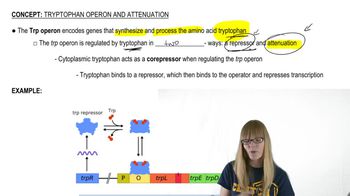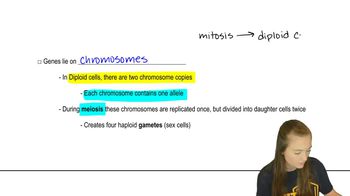Here are the essential concepts you must grasp in order to answer the question correctly.
SOS Response
The SOS response is a global response to DNA damage in bacteria, particularly in E. coli. It involves the activation of a set of genes, including the uvrA gene, which are crucial for DNA repair. This response is tightly regulated by the LexA repressor, which inhibits the expression of these genes under normal conditions. When DNA damage occurs, the RecA protein facilitates the inactivation of LexA, leading to the expression of SOS genes and promoting DNA repair mechanisms.
Recommended video:
LexA Repressor
The LexA repressor is a protein that negatively regulates the SOS response in E. coli by binding to the operator regions of SOS genes, preventing their transcription. When DNA damage is detected, the RecA protein binds to single-stranded DNA and activates the autocatalytic cleavage of LexA, leading to its inactivation. This process allows for the transcription of SOS genes, including uvrA, which are essential for repairing damaged DNA. Understanding the role of LexA is crucial for studying the regulation of DNA repair mechanisms.
Recommended video:
Partial Diploids
Partial diploids are bacterial strains that contain two copies of certain genes, typically achieved through the introduction of a plasmid or a second chromosomal copy. This genetic setup allows researchers to study gene interactions and dominance relationships between mutations. In the context of the uvrAᶜ mutant strain, constructing partial diploids can help determine whether the constitutive expression of UvrA is due to a mutation in the uvrA gene itself or in the regulatory elements, such as lexA. This experimental approach is essential for dissecting the genetic basis of observed phenotypes.
Recommended video:




